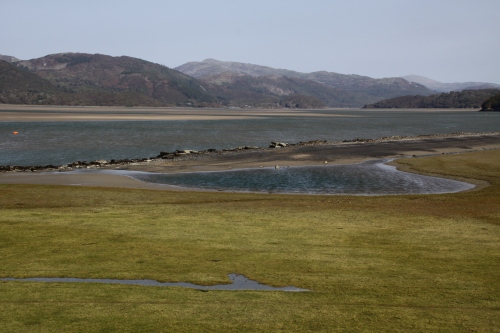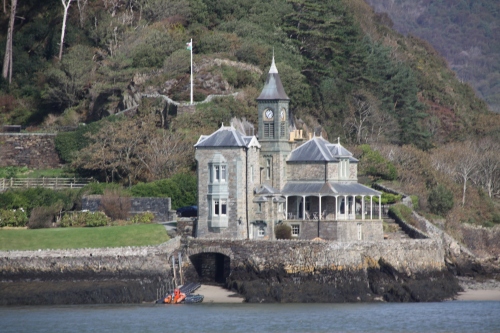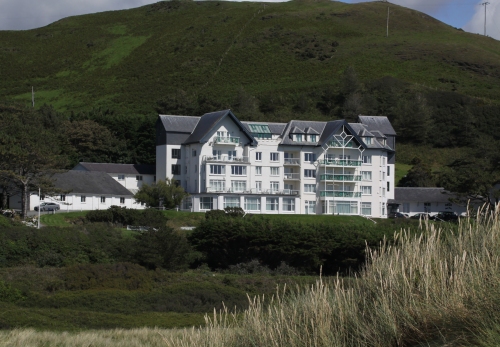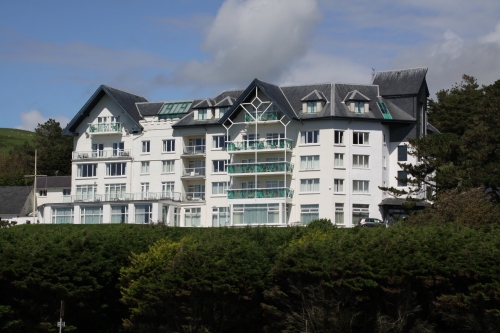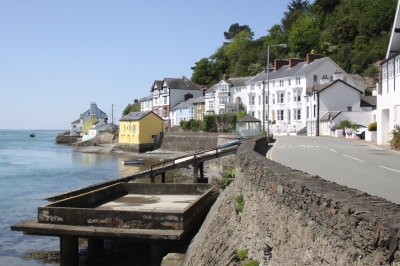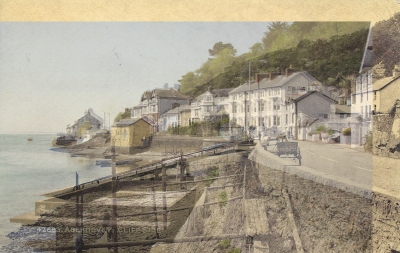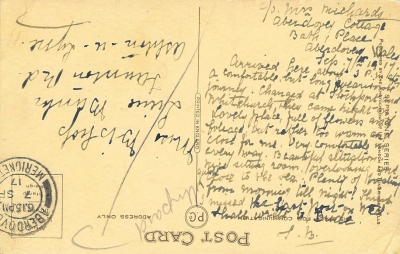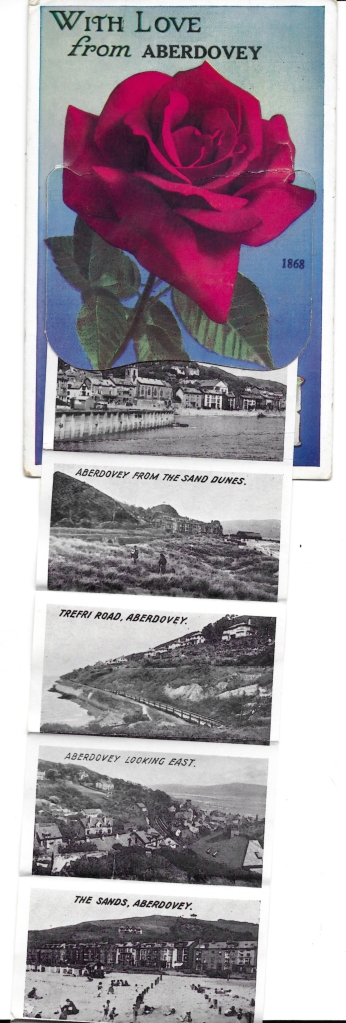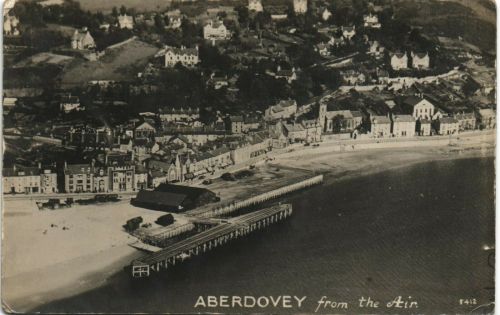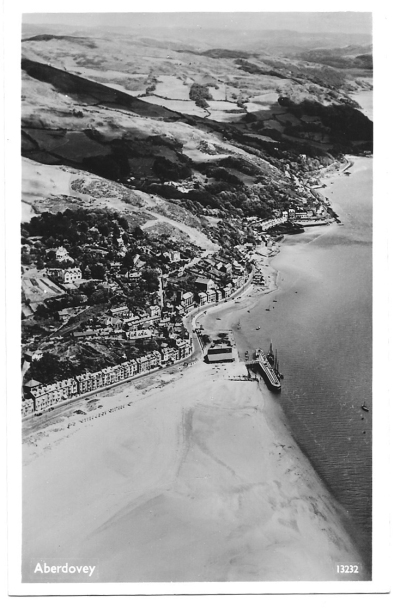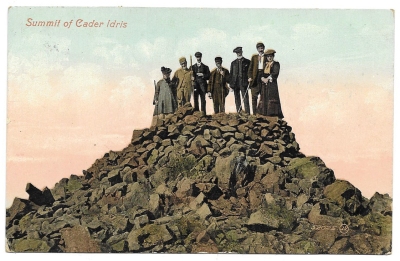 After walking up to Castell y Gaer hillfort in mid September, I drove to Morfa Mawddach railway station, a short drive away, and parked up. This is a favourite route for cyclists of all sorts. Some go there to do some serious peddling around the Mawddach on a marked out on the Mawddach Trail (following the route of the disused “Dolgelley Branch” of the Aberystwyth and Welsh Coast Railway line, which opened in 1869), others had hired bikes in Barmouth. It’s the same with walkers – some are there to do the trail, others are just walking the bridge. Fortunately, it was a very quiet day, at least on the bridge itself. The views on a sunny day are great, and when the wind drops, the high-pitched sound of the oystercatchers is lovely.
After walking up to Castell y Gaer hillfort in mid September, I drove to Morfa Mawddach railway station, a short drive away, and parked up. This is a favourite route for cyclists of all sorts. Some go there to do some serious peddling around the Mawddach on a marked out on the Mawddach Trail (following the route of the disused “Dolgelley Branch” of the Aberystwyth and Welsh Coast Railway line, which opened in 1869), others had hired bikes in Barmouth. It’s the same with walkers – some are there to do the trail, others are just walking the bridge. Fortunately, it was a very quiet day, at least on the bridge itself. The views on a sunny day are great, and when the wind drops, the high-pitched sound of the oystercatchers is lovely.
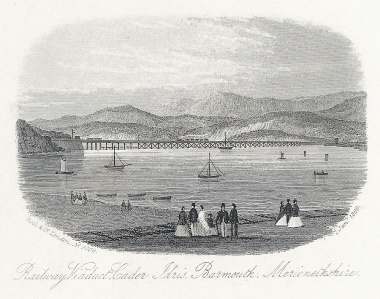
The railway viaduct in c. 1869. Source: Wikipedia
Barmouth Bridge, or viaduct, was built between 1864 and 1867 in to carry the Aberystwyth and Welsh Coast Railway, now the Cambrian Railway, across the Mawddach estuary, which it still does. It cuts off an 18 mile trip around the estuary that would otherwise have had to be taken by the railway between Morfa Mawddach and Barmouth. Designed by Welsh civil engineer Benjamin Piercy, and English civil engineer and architect Henry Conybearet, it has a span of c.800m, the longest wooden-framed viaduct in Britain. It was grade II listed in 1988.
Although most have been replaced long ago, timber pile viaducts of the Barmouth bridge type were once common on the Welsh coastal railways. Conybeare’s decision to choose timber as the main construction material was probably driven by much the same concern to save costs, rather than employing iron,. Baltic timber could be brought to the site very cheaply by sea, and was a fraction of the cost that an iron viaduct would have been. Although it was well known that Teredo navalis, a boring worm, could do considerable damage to vessels and sub-surface wooden structures, it was thought not to inhabit the Mawddach estuary, and may not have done when the viaduct was built.
 The original design included a rolling drawbridge section that pulled back across the track and enabled vessels to use the navigation channel into the estuary. This was replaced by the twin-hogback steel lattice swing bridge in 1899, which, with a span of 41.5m, could swing open to let vessels pass, shown on a vintage postcard to the right. The swing span was operated in March 1984 and April 1987, but permanent rails indicate that it is unlikely to be opened in the future.
The original design included a rolling drawbridge section that pulled back across the track and enabled vessels to use the navigation channel into the estuary. This was replaced by the twin-hogback steel lattice swing bridge in 1899, which, with a span of 41.5m, could swing open to let vessels pass, shown on a vintage postcard to the right. The swing span was operated in March 1984 and April 1987, but permanent rails indicate that it is unlikely to be opened in the future.
After a number of repairs and renovations, the wooden elements supporting the span are composed of 113 timber pile trestles 5.5 metres apart, which are now encased in concrete sleeves reinforced by glass-fibre.
 The viaduct has had quite an exciting life, with a number of challenges to its longevity. It caught fire in 1892, and it was only thanks to a local boy, who raised the alert, that the fire was swiftly extinguished. It had a lucky escape in 1946 when a live mine came in on the tide and touched one of the wooden pillars, but fortunately failed to detonate. In 1980, considerable dismay was caused by the discovery that Teredo navalis had eaten into 69 of the supporting pillars. The bridge had to be closed, and restoration work was carried out over a six month period, during which a rail replacement service was run by the Cambrian Line between Barmouth and Tywyn. In August 2015, there were real fears that the footbridge would be closed as part of a cost-saving exercise announced by Gwynedd Council. The bridge had been a toll bridge, with a couple hired to collect small sums from users of the walkway, but with 90,000 visitors a year, these sums added up very nicely and contributed towards £38,000 that Gwynedd Council paid to Network Rail to keep the walkway open. An online petition was immediately organized by a local resident, collecting over 20,600 names in support of keeping the bridge open. A £1.00 honesty box system was implemented, but even on my one walk to Barmouth and back, it was amazing how many people didn’t contribute anything. In October 2016 a fire broke out and the bridge had to be closed again, but only for a fortnight, with a rail replacement service also running between Barmouth and Tywyn.
The viaduct has had quite an exciting life, with a number of challenges to its longevity. It caught fire in 1892, and it was only thanks to a local boy, who raised the alert, that the fire was swiftly extinguished. It had a lucky escape in 1946 when a live mine came in on the tide and touched one of the wooden pillars, but fortunately failed to detonate. In 1980, considerable dismay was caused by the discovery that Teredo navalis had eaten into 69 of the supporting pillars. The bridge had to be closed, and restoration work was carried out over a six month period, during which a rail replacement service was run by the Cambrian Line between Barmouth and Tywyn. In August 2015, there were real fears that the footbridge would be closed as part of a cost-saving exercise announced by Gwynedd Council. The bridge had been a toll bridge, with a couple hired to collect small sums from users of the walkway, but with 90,000 visitors a year, these sums added up very nicely and contributed towards £38,000 that Gwynedd Council paid to Network Rail to keep the walkway open. An online petition was immediately organized by a local resident, collecting over 20,600 names in support of keeping the bridge open. A £1.00 honesty box system was implemented, but even on my one walk to Barmouth and back, it was amazing how many people didn’t contribute anything. In October 2016 a fire broke out and the bridge had to be closed again, but only for a fortnight, with a rail replacement service also running between Barmouth and Tywyn.
On its 150th anniversary a celebration was held, and a special train was run from Shrewsbury to Pwllheli, pulling Riviera Trains Mark 1 carriages. In March 2020 it was announced that the bridge was to receive a £25 million revamp from Network Rail to replace a large number of the timber and metal elements and install a new track along the entire span.
Sources
Barmouth Railway Viaduct. Coflein. https://coflein.gov.uk/en/site/34918/details/barmouth-railway-viaductbarmouth-bridge-cambrian-coast-line
Barmouth Viaduct. Engineering Timelines
https://web.archive.org/web/20141015015046/http://www.engineering-timelines.com/scripts/engineeringItem.asp?id=1340
Closing Barmouth Bridge will have ‘big effect’ on economy warns charity. North Wales Live. 20th August 2015
https://www.dailypost.co.uk/news/north-wales-news/closing-barmouth-bridge-big-effect-9841952
20,000-name petition to keep Barmouth Bridge open to all. 21st August 2015. BBC.
https://www.bbc.co.uk/news/uk-wales-north-west-wales-34010645
Fire shuts Barmouth Bridge until next week. North Wales Live. 4th October 2016
https://www.dailypost.co.uk/news/north-wales-news/fire-shuts-barmouth-bridge-until-11978355
150th Anniversary of Barmouth Bridge Celebrated with Special Train Service. Forwarder Magazine. 10th October 2017
https://forwardermagazine.com/150th-anniversary-of-barmouth-bridge-celebrated-with-special-train-service/
Barmouth Bridge £20m plan on its 150th anniversary. BBC News. 10 October 2017
https://www.bbc.co.uk/news/uk-wales-north-west-wales-41568248
Barmouth Viaduct to get £25m revamp. BBC News. 26 May 2020
https://www.bbc.co.uk/news/uk-wales-52807338

